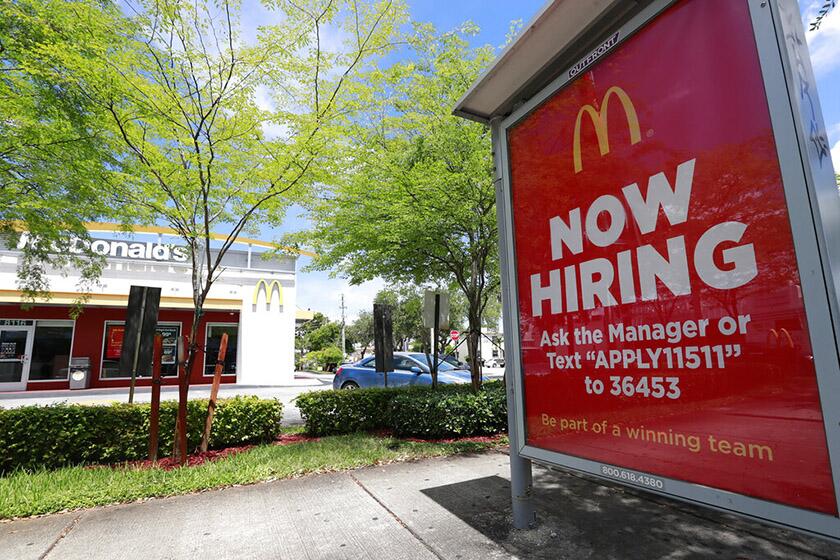Retail Center’s Defeat Splits Business Leaders
To Simi Valley Unified School District officials, building a huge shopping center on surplus land near City Hall sounded like an excellent way to raise up to $39 million in badly needed education funds.
But a few weeks ago, the City Council rejected the plan, saying that Simi Valley already has a glut of retail space. Why should the city allow another 26-acre retail center, council members asked, when there are already so many empty storefronts in town?
Their decision has divided local business leaders.
Some call the council shortsighted, saying that there is still room for shopping centers with good locations and attractive tenants and that the current surplus of space is temporary. Others applaud the council’s decision, saying a large new center would just steal business from existing retailers, many of whom are already hurting.
On one point, there is little disagreement: Simi Valley has plenty of unleased space at its retail shopping centers--more than in most other Ventura County cities, by some estimates.
“You can go into almost any shopping center in the city, and you’ll find storefronts that are vacant,” Councilman Bill Davis said. “My guess is that if you didn’t build another retail commercial piece of property in the city, you’d have enough to last the next five to 10 years.”
Vick Yates, a leasing agent who represents many Simi Valley retail centers, acknowledged that a glut exists. “Because of the economy over the past two years, Simi Valley has been in what we call a negative absorption,” he said. “It means more stores are becoming vacant than we can lease.”
Nancy Bender, executive director of the Simi Valley Chamber of Commerce, added: “We certainly hope it’s a temporary situation. But many of us in the business community are concerned about the high vacancy rate at retail shopping centers. It’s very difficult during this (economic) downturn to have so many small shopping centers. We want to see them become very successful.”
In December, Yates’ firm, Troop Real Estate, surveyed 38 Simi Valley retail centers with 2.2 million square feet of retail space available for rent, not including large anchor stores such as supermarkets, discount centers and drugstores. The study concluded that the citywide retail vacancy rate was 14.9%--up from 9.9% one year earlier.
Other real estate specialists have estimated that Ventura County’s highest retail vacancy rates exist in the cities of Simi Valley, Oxnard and Camarillo. By comparison, the city of Ventura had an 8.4% retail vacancy rate in one recent survey by CB Commercial Real Estate Group of shopping centers with 50,000 or more square feet.
David Rush, an eastern Ventura County retail specialist with CB Commercial, said Simi Valley has a mix of very busy and very slow shopping centers, depending on location and anchor stores.
“One of the premier intersections to be at in Ventura County is Sycamore (Drive) and Cochran” Street in Simi Valley, he said. “You don’t find an intersection quite like that in Thousand Oaks. But Thousand Oaks as a whole is in better shape.”
Yates said the picture is most bleak at Simi Valley’s small neighborhood mini-malls--those with less than 20,000 square feet of space--where the vacancy rate in December was 38.7%.
These small centers traditionally house small markets, dry cleaners, video stores and doughnut shops. It has become difficult to find and retain tenants at such centers in Simi Valley, particularly when they are not at a prime location, real estate experts say.
“I built a little center last year at Erringer (Road) and Heywood (Street), which is a secondary location,” said Steve Minnick, a West Los Angeles physician who owns commercial property in Simi Valley. “I knew before I constructed it that it would be extremely difficult to lease the stores. Three out of the four spaces are still vacant.”
Minnick said he has only leased 60% of his space at another small center on the southwest corner of Cochran Street and Tapo Canyon Road. He predicted, however, that business will pick up dramatically after the city finishes extending Tapo Canyon Road southward, generating additional traffic.
Minnick said he does not plan to build any more retail centers in Simi Valley because of the city’s complex, costly and time-consuming review process. Still, he does not blame residents who are anxious to limit local growth and the traffic and pollution problems that it can create.
“I’m a developer,” Minnick said. “We developers are greedy and aggressive, including me, because of the dollar potential. But we don’t have to live in Simi Valley and suffer the consequences of what we do.”
Just across the street from Minnick’s property, on the northwest corner of Tapo Canyon and Cochran, is one of the city’s busiest centers, anchored by a Lucky supermarket and a Longs drugstore.
Executives at Griffin Development, which operates the center, said 97% of its space is leased. Kristene Griffin, president of the firm, attributed its success to the two anchor stores, the nearby freeway ramps and good relationships with the tenants.
Tenant Gene Tempo, 62, who runs a dry-cleaning and alterations shop, said the Griffin center is well-maintained, and its anchor stores draw lots of customers. “They can go to the market, the drugstore and do their cleaning at the same time,” he said. “It makes it one-stop shopping.”
Nevertheless, Tempo said his business is down 10% compared to last year, partly because Simi Valley is overbuilt with retail centers. He said the city, with just over 100,000 residents, has about 30 dry-cleaning shops. “We need half that many,” he said.
Tempo said he was pleased that the City Council quashed the school district’s recent proposal for the 26-acre shopping center at Tapo Canyon Road and Alamo Street. “That center definitely would have hurt my business,” he said.
Bonnie Walters, the leasing agent for Tapo Canyon Plaza I, a small shopping center just across the street from the proposed school district project, agreed. “With the way the economy is now and the vacancy factor, I don’t see a great need for one at the present time,” she said.
Walters said her center is fully leased, except for a drugstore that had served as the anchor merchant before it closed in December. She said she has a letter of intent from a new tenant that may move into that space.
Although Walters’ complex is nearly filled, an adjacent, newer center, Tapo Canyon Plaza II, is almost completely vacant.
The plaza’s leasing agent, Yates, said Simi Valley’s retail store glut occurred because many developers began building new centers, such as Tapo Canyon Plaza II, or renovating older ones just before the recession developed. Also, he said many Simi Valley residents work in the aerospace industry, which has been hit especially hard by the slump.
Finally, he said, city officials in recent years have imposed growth controls that curb new home-building--and limit the number of new shoppers.
Despite the cloud over Simi Valley’s retail centers, Yates believes that the City Council should not have rejected the school district’s plan for another large center.
“This was a preliminary proposal,” he said. “The center would have been years away from being constructed and couldn’t have been constructed until it was at least 75% pre-leased” because of current lending guidelines.
Yates added, “By the time this center were to be built, we would not have the vacancy problems we’re having today.”
More to Read
Inside the business of entertainment
The Wide Shot brings you news, analysis and insights on everything from streaming wars to production — and what it all means for the future.
You may occasionally receive promotional content from the Los Angeles Times.










